Protect Yourself from Mold
After natural disasters such as hurricanes, tornadoes, and floods, excess moisture and standing water contribute to the growth of mold in homes and other buildings. When returning to a home that has been flooded, be aware that mold may be present and may be a serious health risk for your family.
People at Greatest Risk from Mold
People with asthma, allergies, or other breathing conditions may be more sensitive to mold. People with immune suppression (such as people with HIV infection, cancer patients on chemotherapy, and people who have received an organ transplant) are more susceptible to mold infections.
Possible Health Effects of Mold Exposure
People who are sensitive to mold may experience stuffy nose, irritated eyes, wheezing, or skin irritation. People allergic to mold may have difficulty in breathing and shortness of breath. People with weakened immune systems and with chronic lung diseases, such as obstructive lung disease, may develop mold infections in their lungs. If you or your family members have health problems after exposure to mold, contact your doctor or other health care provider.
Recognizing Mold
You may recognize mold two ways:
- Sight. Are the walls and ceiling discolored, or do they show signs of mold growth or water damage?
- Smell. Do you smell a bad odor, such as a musty, earthy smell or a foul stench?
Safely Preventing Mold Growth
Clean up and dry out the building quickly (within 24 to 48 hours). Open doors and windows. Use fans to dry out the building. Also follow these guidelines:
- When in doubt, take it out! Remove all porous items that have been wet for more than 48 hours and that cannot be thoroughly cleaned and dried. These items can remain a source of mold growth and should be removed from the home. Porous, non-cleanable items include carpeting and carpet padding, upholstery, wallpaper, drywall, floor and ceiling tiles, insulation material, some clothing, leather, paper, wood, and food should all be removed. Removal and cleaning are important because even dead mold may cause allergic reactions in some people.
- To prevent mold growth, clean wet items and surfaces with detergent and water.
- Homeowners may want to temporarily store items outside of the home until insurance claims can be filed. If you wish to disinfect items that have come into contact with the water, refer to the U.S. Environmental Protection Agency (EPA) document, A Brief Guide to Mold and Moisture in Your Home, at http://www.epa.gov/mold/pdfs/moldguide.pdf
If there is mold growth in your home, you should clean up the mold and fix any continuing water problem, such as leaks in roofs, walls, or plumbing. Controlling moisture in your home is the most critical factor for preventing future mold growth.
To remove mold growth from hard surfaces use commercial products, soap and water, or a bleach solution of no more than 1 cup of bleach in 1 gallon of water. Use a stiff brush on rough surface materials such as concrete.
If you choose to use bleach to remove mold:
- Never mix bleach with ammonia or other household cleaners. Mixing bleach with ammonia or other cleaning products will produce dangerous, toxic fumes.
- Open windows and doors to provide fresh air while cleaning and for a short time after.
- Wear non-porous gloves and protective eye wear.
- If the area to be cleaned is more than 10 square feet, consult the U.S. Environmental Protection Agency (EPA) guide titled Mold Remediation in Schools and Commercial Buildings. Although focused on schools and commercial buildings, this document also applies to other building types. You can get it free by calling the EPA Indoor Air Quality Information Clearinghouse at (800) 438-4318, or by going to the EPA web site at https://www.epa.gov/mold/mold_remediation.html.
- Always follow the manufacturer’s instructions when using bleach or any other cleaning product.
- More information on personal safety while cleaning up after a natural disaster is available at emergency.cdc.gov/disasters/workers.asp.
If you plan to be inside the building for a while or you plan to clean up mold, you should buy an N95 mask at your local home supply store and wear it while in the building. Make certain that you follow instructions on the package for fitting the mask tightly to your face. If you go back into the building for a short time and are not cleaning up mold, you do not need to wear an N95 mask.
For more information, visit the following websites:
http://emergency.cdc.gov/disasters/floods/
http://www.dhs.wisconsin.gov/flood/index.htm
Bob Beisbier, owner of BK Home Inspections, is a Certified Master Home Inspector who has been providing professional and thorough home inspections in southeast Wisconsin for over 12 years. Bob is Infrared certified, DILHR Certified, and provides Home Energy Tune-ups, Environmental Data Reports, Pre-sale Home Inspections and Pre-offer Home Inspections.






